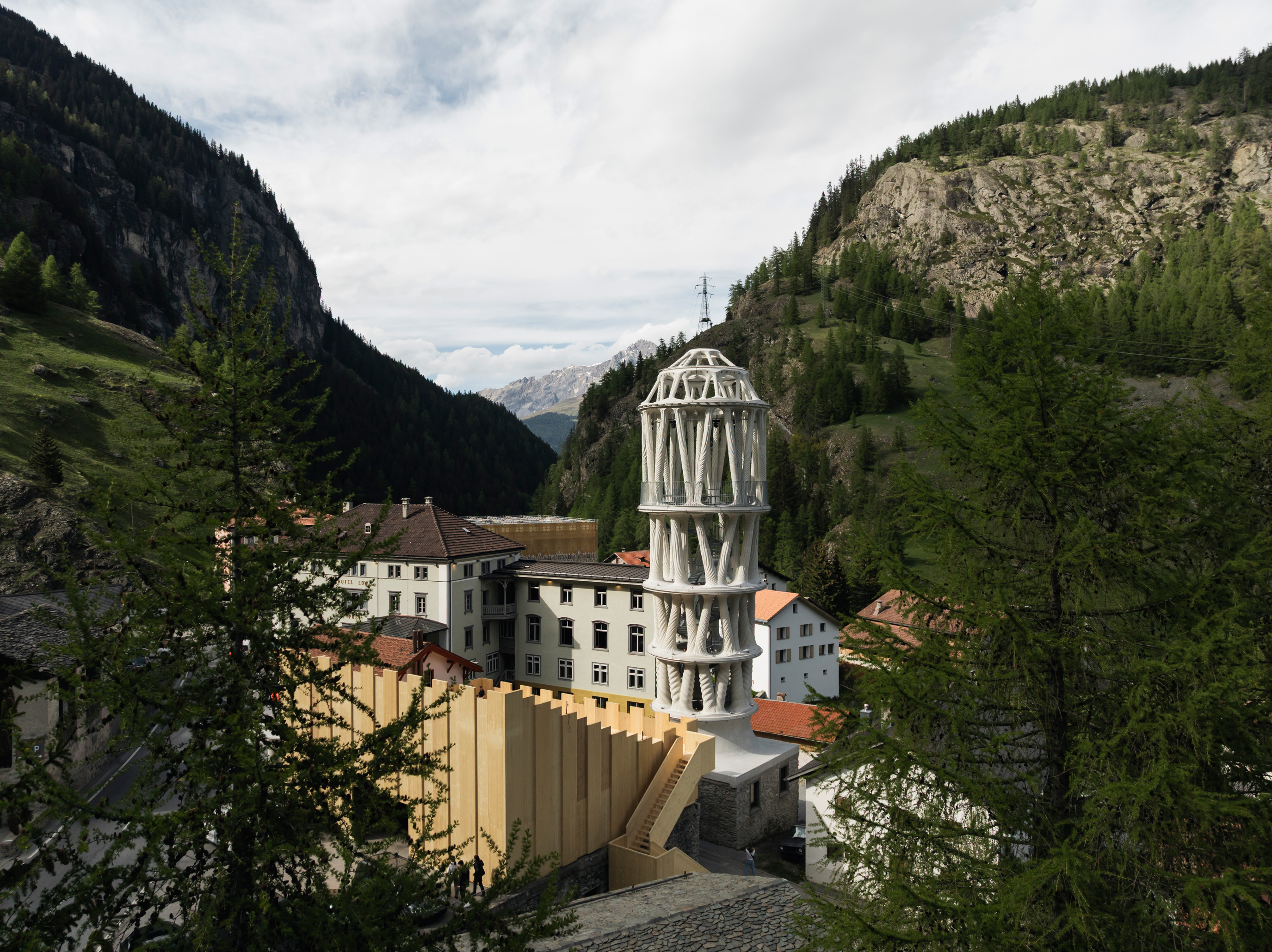Tor Alva, the world’s tallest 3D-printed tower
ETH ZürichRising almost 30 meters, Tor Alva is the tallest 3D-printed tower in the world. Located in Mulegns, a small Swiss village with only eleven inhabitants, it has been built by Nova Fundaziun Origen with ETH Zürich. Designed by the architect Michael Hansmeyer with ETH Zürich professors Walter Kaufmann, Robert Flatt, and Benjamin Dillenburger, the tower seeks to revitalize the area functioning as a cultural center for five years before being moved to another location. Its structure, composed of 32 columns distributed in four levels, emulates a layered cake, paying tribute to the history of pastry chefs in the region.

The project hits a milestone in digital construction. The printing of the columns on ETH’s Hönggeberg campus took five months. The components were assembled later, transported to Mulegns, and placed over a building that had been an ironworks. The technique chosen was a process of additive fabrication that, by means of which an industrial robot, applies the concrete layer by layer, with no need for molds. The method is based on complex algorithms that integrate ornamental and structural aspects in one single design.

A concrete product was specially developed for the purpose. It had to be soft enough for pieces to be joined, and must harden fast enough to take further layers. Right before the concrete exits the pressurized mouth of the machine, two additives are put into the mix to optimize its properties. An innovative aspect of the project is that the printed elements are not just ornamental, but also load-bearing. A robot places an annular reinforcement at 20-centimeter intervals, and longitudinal bars are added after the printing. Finally, the research team developed a testing method to reliably calculate the load-bearing capacity of the 3D-printed concrete.


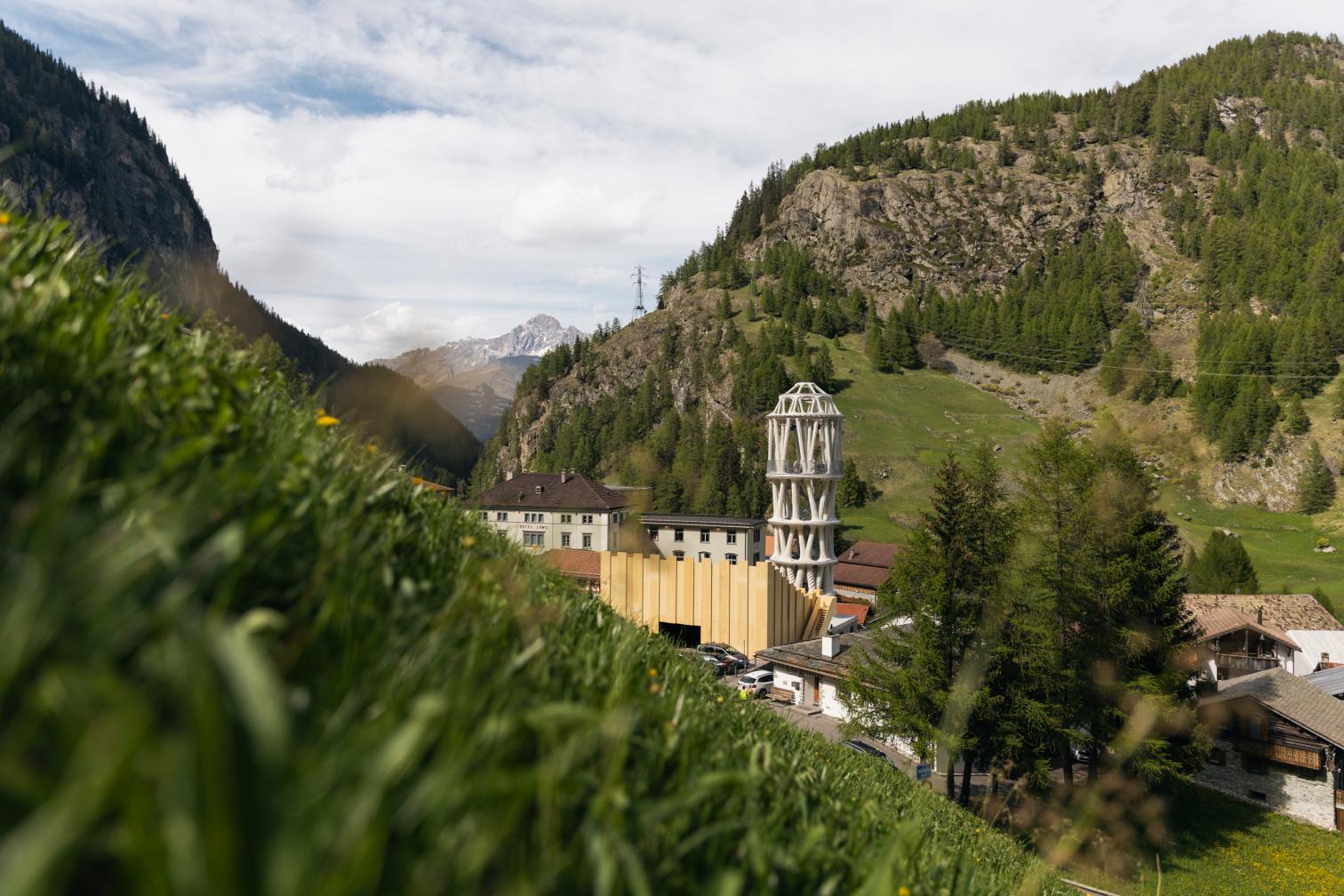
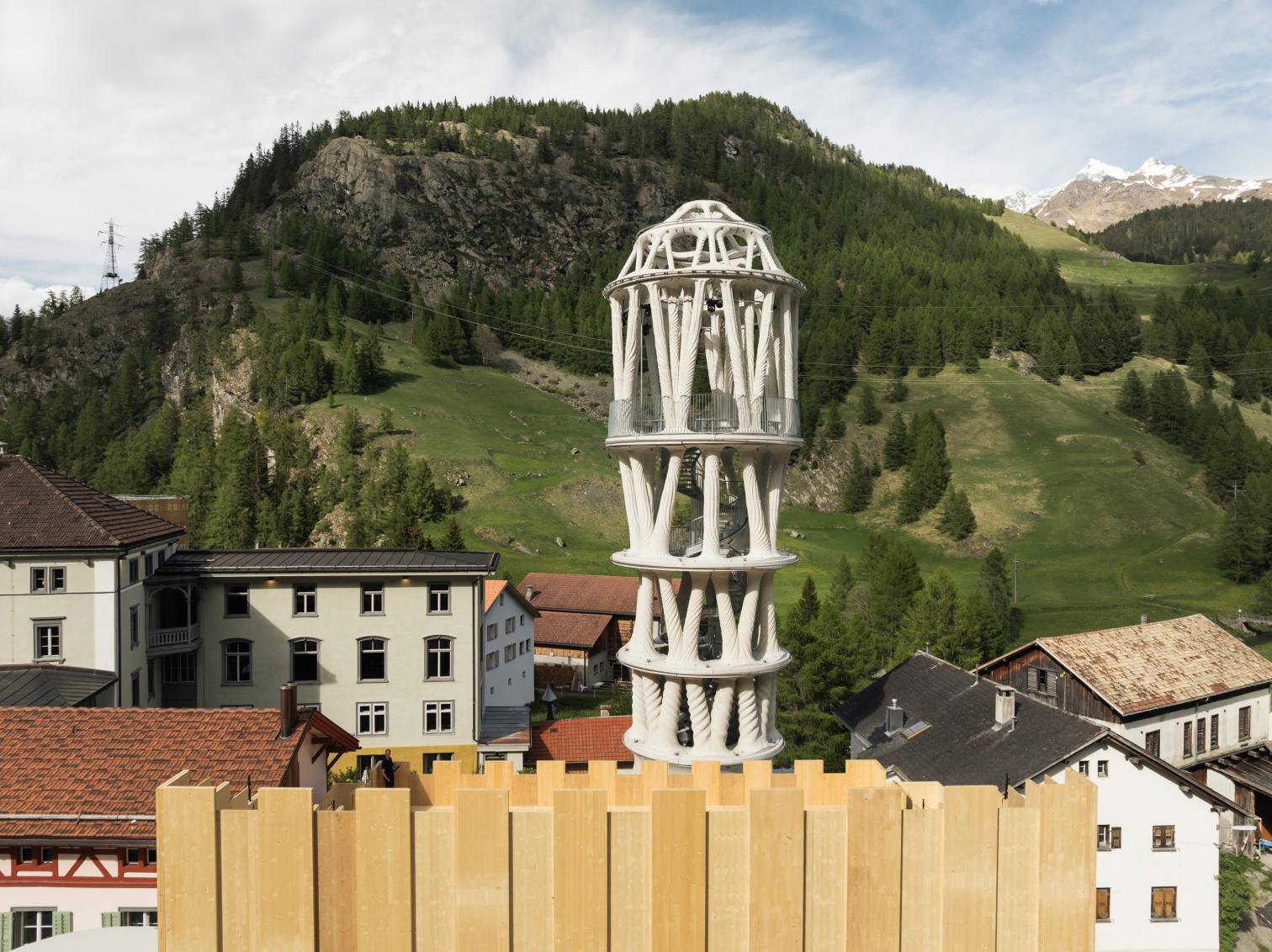
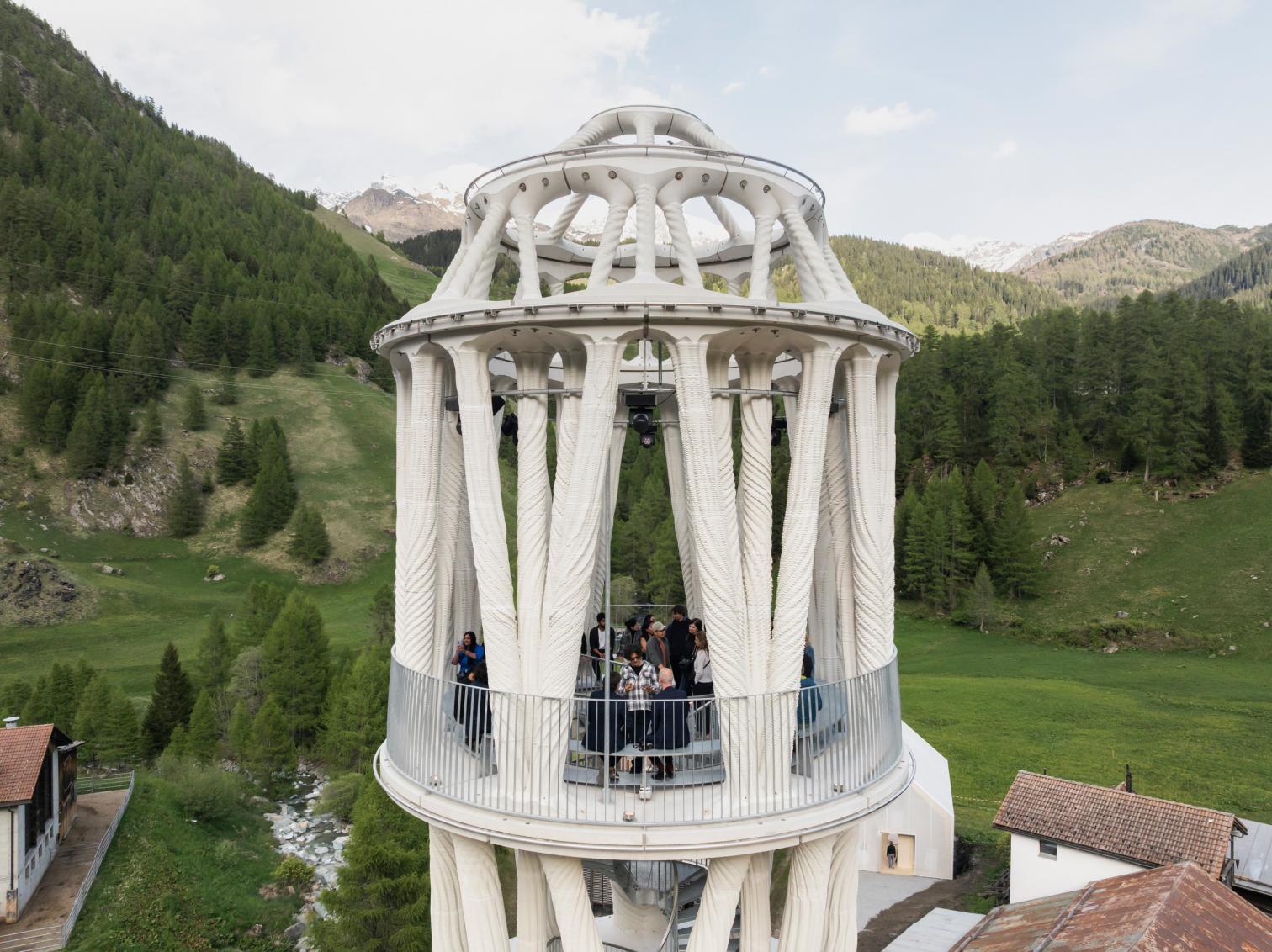


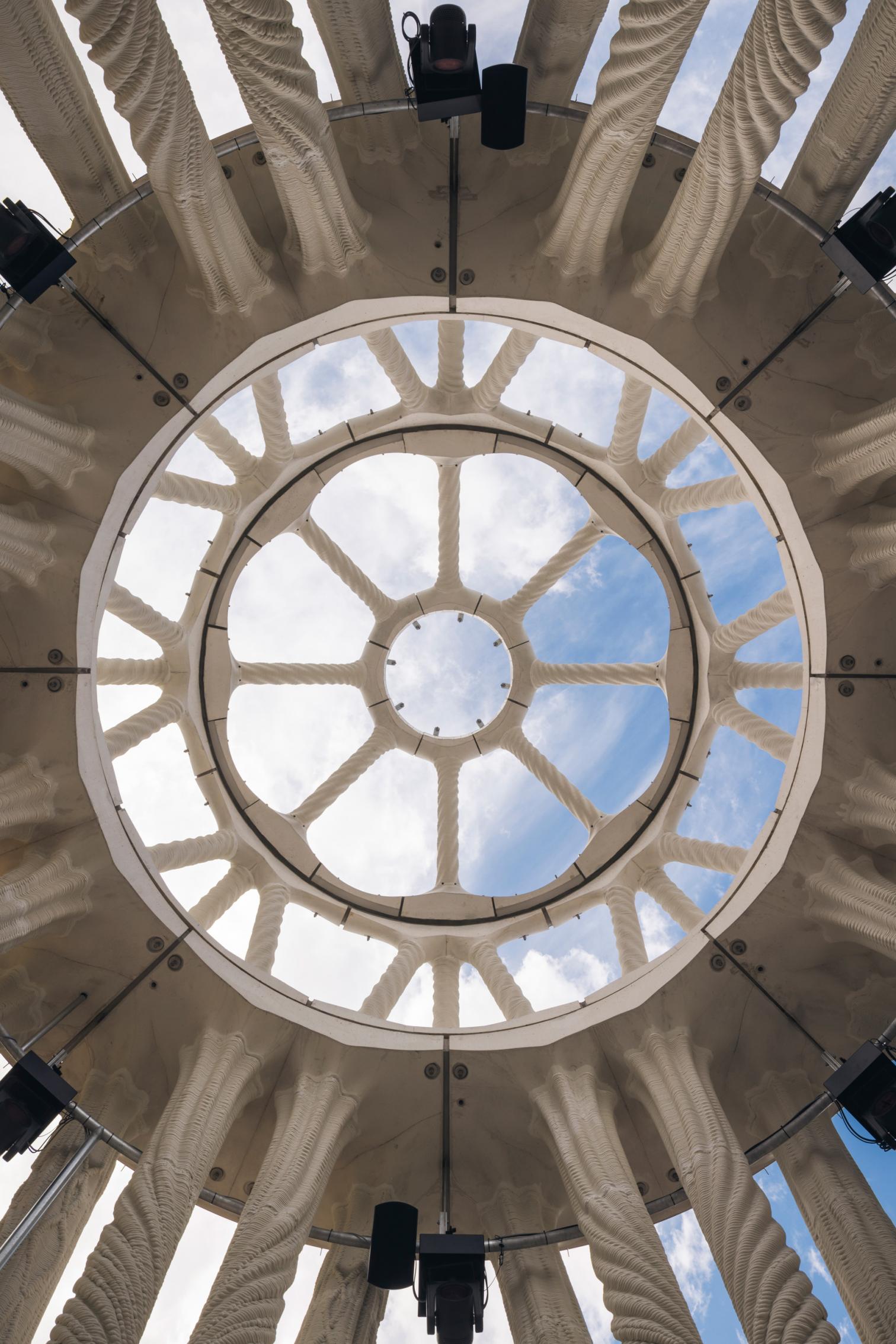
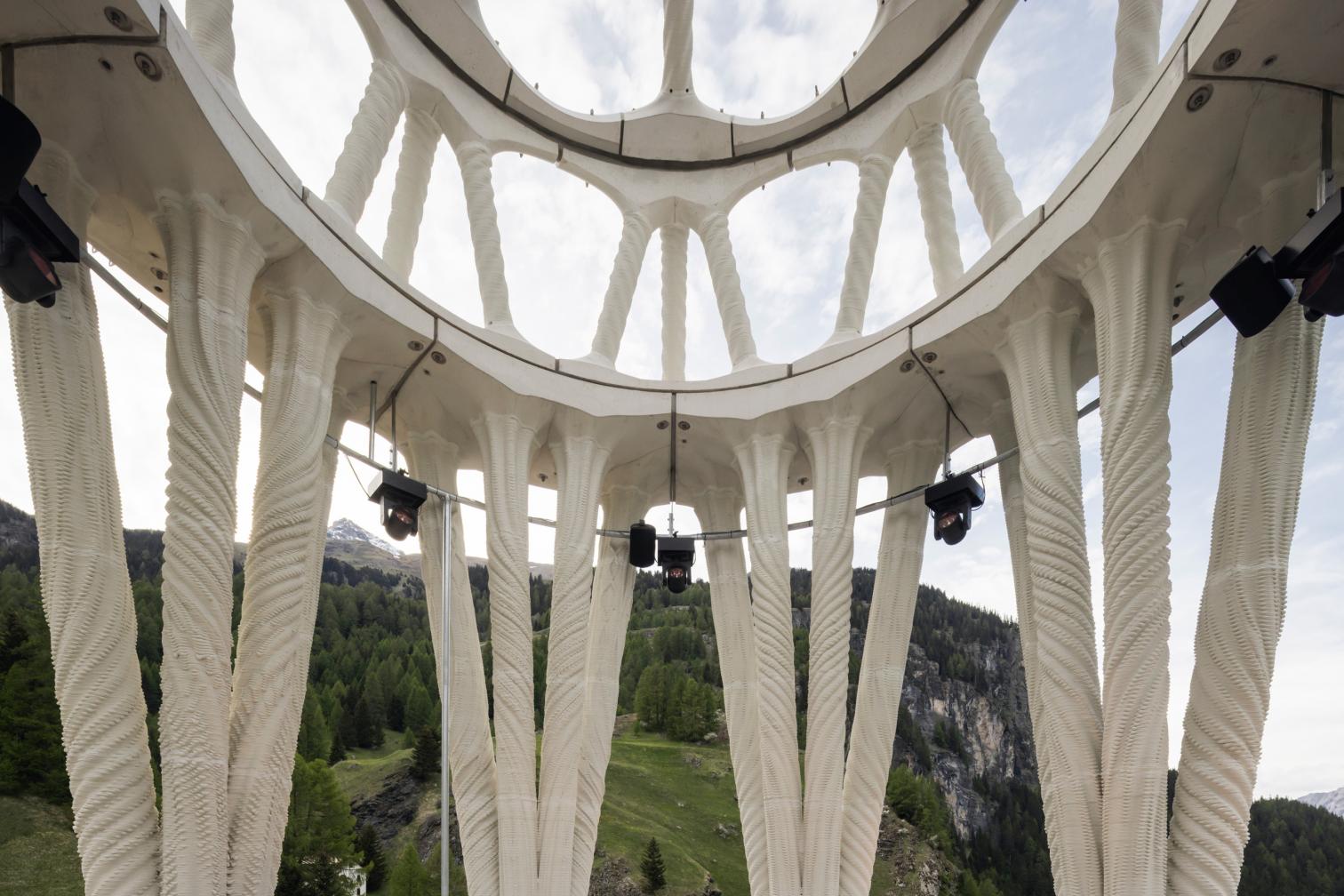

- Typologies Prefabrication
- Material Concrete
- Date 2025
- City Mulegns
- Country Switzerland
- Photograph Benjamin Hofer Birdview

